VIBRATION DIAGNOSIS 'REED' TACHOMETER INFORMATION

MODELS AFFECTED: ALL
Diagnosis automotive vibrations and isolating the responsible component or components can be both difficult and time-consuming. To aid in diagnosing vibrations, Cadillac has developed car line Rotational Order charts. These charts, combined with a resonant Reed Tachometer (Figure 1), provide a systematic method for diagnosing vibration conditions.
1. Resonant Reed Tachometer
The Reed Tachometer consists of two rows of reeds, each reed is designed to vibrate at a particular frequency. The scale on the Reed Tachometer measures frequency in Hertz (Hz). The Rotational Order charts are designed to associate a particular frequency vibration with the responsible component. Each component on a vehicle will vibrate at a natural frequency. This frequency acts like a fingerprint and will identify a component. For a particular component, this frequency will vary with speed and/or engine RPM as shown in the charts.
Our experience has shown the Reed Tachometer should be placed on the passenger door armrest or top of the instrument panel for ease of viewing and for effective pick-up of a vibration. Figure 1 shows a Reed Tachometer which is picking up a 13 Hz vibration.
Biddle FRAHM Resonant Reed Tachometers P/N 99181100, called "Autotach" by the manufacturer cost approximately $440.00 and can be ordered directly from:
Biddle Instruments 510 Township Line Road Blue Bell, Pennsylvania 19422 (215) 646-9200
II. Rotational Order Charts ----------------------- Rotational Order charts are attached for:
1983 C-Cars and 1984-85 D-Cars w/4.1L V-8 Engine and 3.42:1 Ratio Rear Axle
1984-85 J-Cars w/2.0L L-4 Engine and 125C Model CA or CB Transaxle
1985 J-Cars w/2.8L V-6 Engine and Automatic Transaxle
1984-85 E/K-Cars w/4.1L V-8 Engine and 3.15:1 Ratio Final Drive
1985 C-Cars w/4.1L V-8 Engine and 440-T4 Model AY Transaxle
These charts will also be included in Section OA of all future Cadillac Service Information Manuals. Additionally, Sections OA of the "D/E/K" Service Information Manual and "C" Service Information Manual currently contain information on "Vibration Complaints and Corrections." This portion of Section OA provides a systematic procedure for classifying a vibration condition in one or more of the following categories: (1) car speed sensitive, (2) engine speed sensitive, (3) torque (throttle) sensitive, or (4) jounce sensitive. Each of these categories subsequently identifies the probable areas for investigation and lists procedures to repair the condition. This information also will be inclucded in the 1986 Cimarron Service Information Manual.
To diagnose a vibration condition using these charts, two inputs are required:
1. Vehicle speed or engine RPM - Vehicle speed can be read off the speedometer when the vehicle is in 4th gear (3rd gear on Cimarrons) with TCC/VCC engaged. Vehicle speed can be verified using the onboard diagnostic parameters (except Cimarron), refer to Section 6E of the Service Information Manual. Engine RPM can also be read from the diagnostic parameters, refer to Section 6E of the Service Information Manual. Engine RPM can be read directly from the Tachmeter on Cimarrons.
2. The Frequency of the Vibration - The frequency of the vibration can be read from the scale on the Reed Tachometer; frequency is read in Hertz (Hz).
Example: A 1985 C-car with a 440-T4 transaxle is travelling at 55 MPH, and the 13 Hz reeds are vibrating (Figure 1). The Rotational Order chart for 1985 C-cars (Figure 2) indicate, by following across the chart on the 13 Hz line to where it intersects the 55 MPH vertical line, that there is a 1st order tire vibration.
As noted on the chart, some components may induce more than vibration at a given speed (i.e., tires, identified by the * in Figure 2). These multiple vibrations are referred to as the order of a vibration. The order of a vibration refers to the number of disturbances created by one rotation of a component. For example, a tire with one heavy spot will produce one disturbance each rotation--a 1st order vibration (Figure 3). An oval-shaped tire will produce two disturbances each rotation--a 2nd order vibration (Figure 4).
In general, the suspect comonents should be isolated to verify the cause of a vibration before parts are replaced. For a 1st order tire vibration, the responsible component can be anything which rotates at wheel and tire speed (i.e., wheels, tires, brake rotors, brake drums). These can be serviced or rep!aced with known good parts to identify the component causing the vibration. Once verified, the component can be balanced or replaced as necessary.
Using a Resonant Reed Tachometer in a vehicle will take some practice. One of the more important things to be aware of when using the Reed Tachometer for the first time is thill the Reeds are very sensitive and will pick up many low amplitude vibrations. These will appear as slight movements of many Reeds, and do not correspond to any particular component. Reed moverment that corresponds to a vibrating component will be greater in amplitude, traveling the full range of the viewing area. The Reed vibrating will also change as engine RPM or vehicle speed charges, and will follow the lines on the Rotational Order Charts.

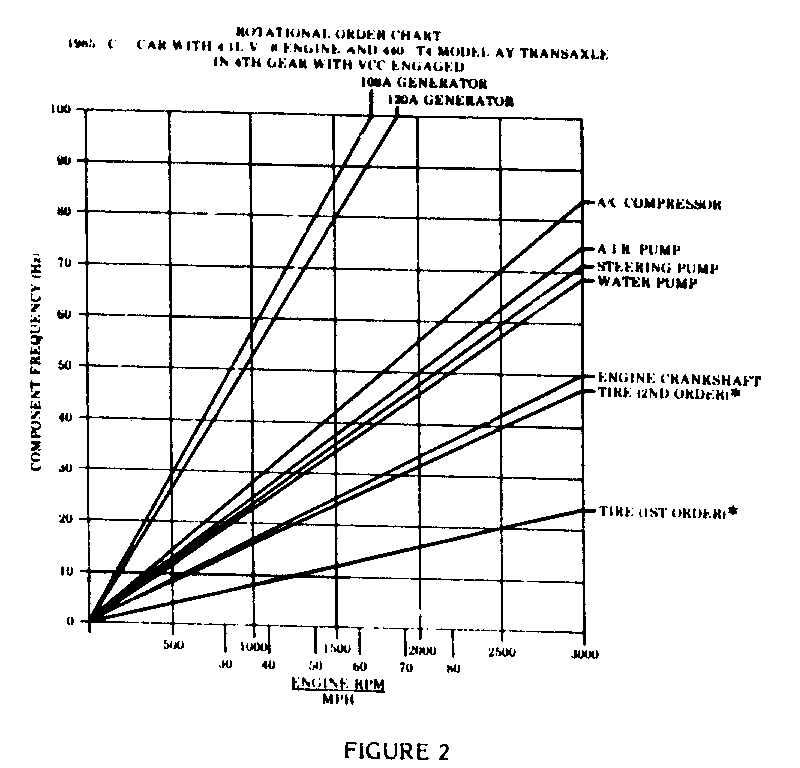
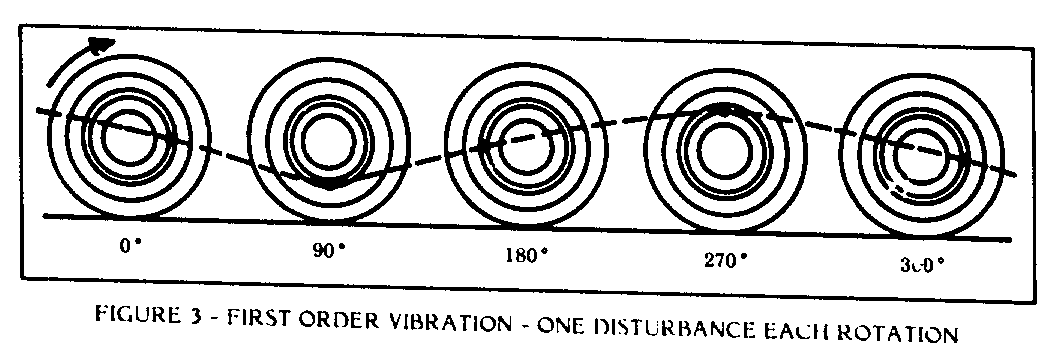


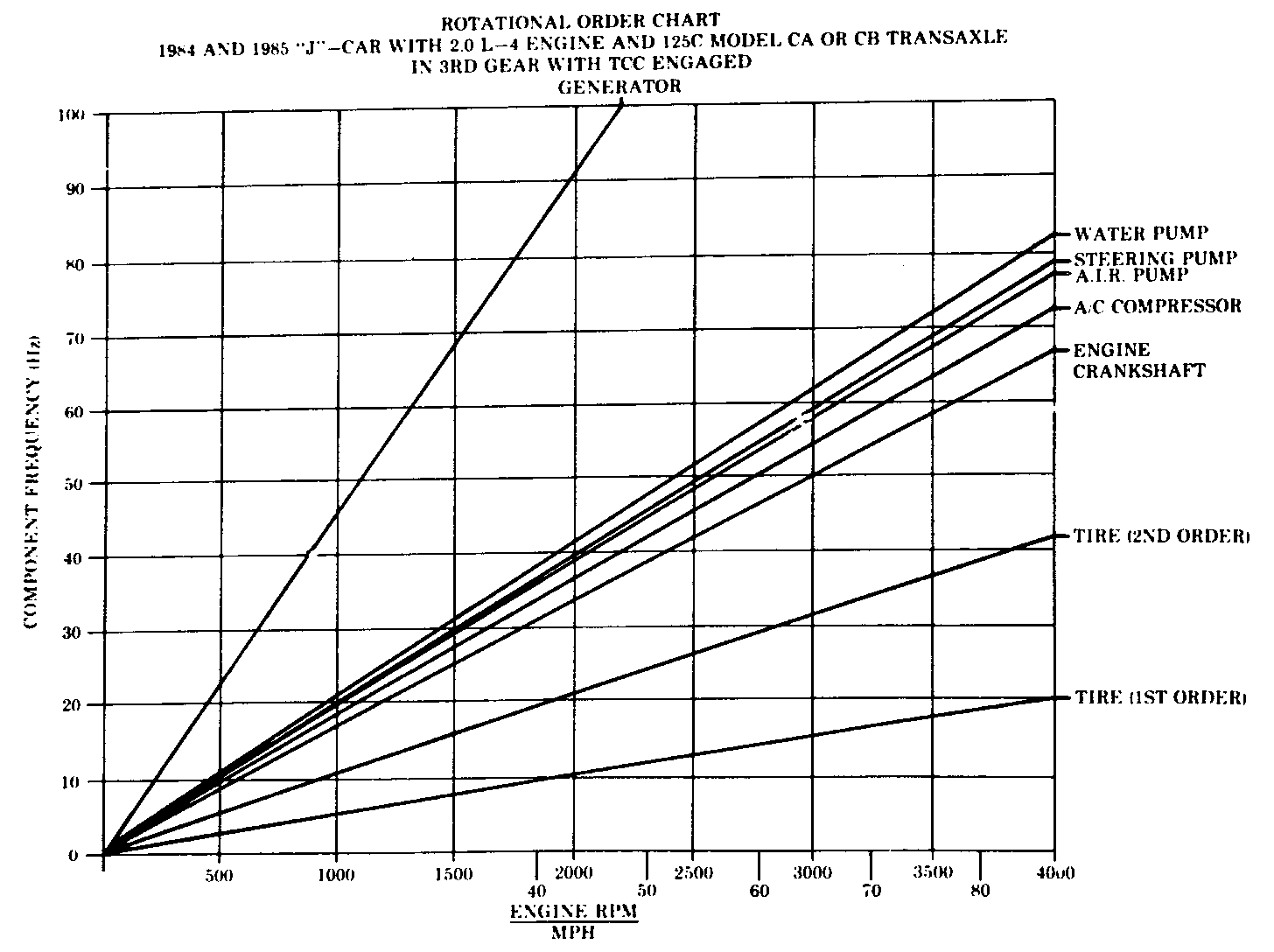
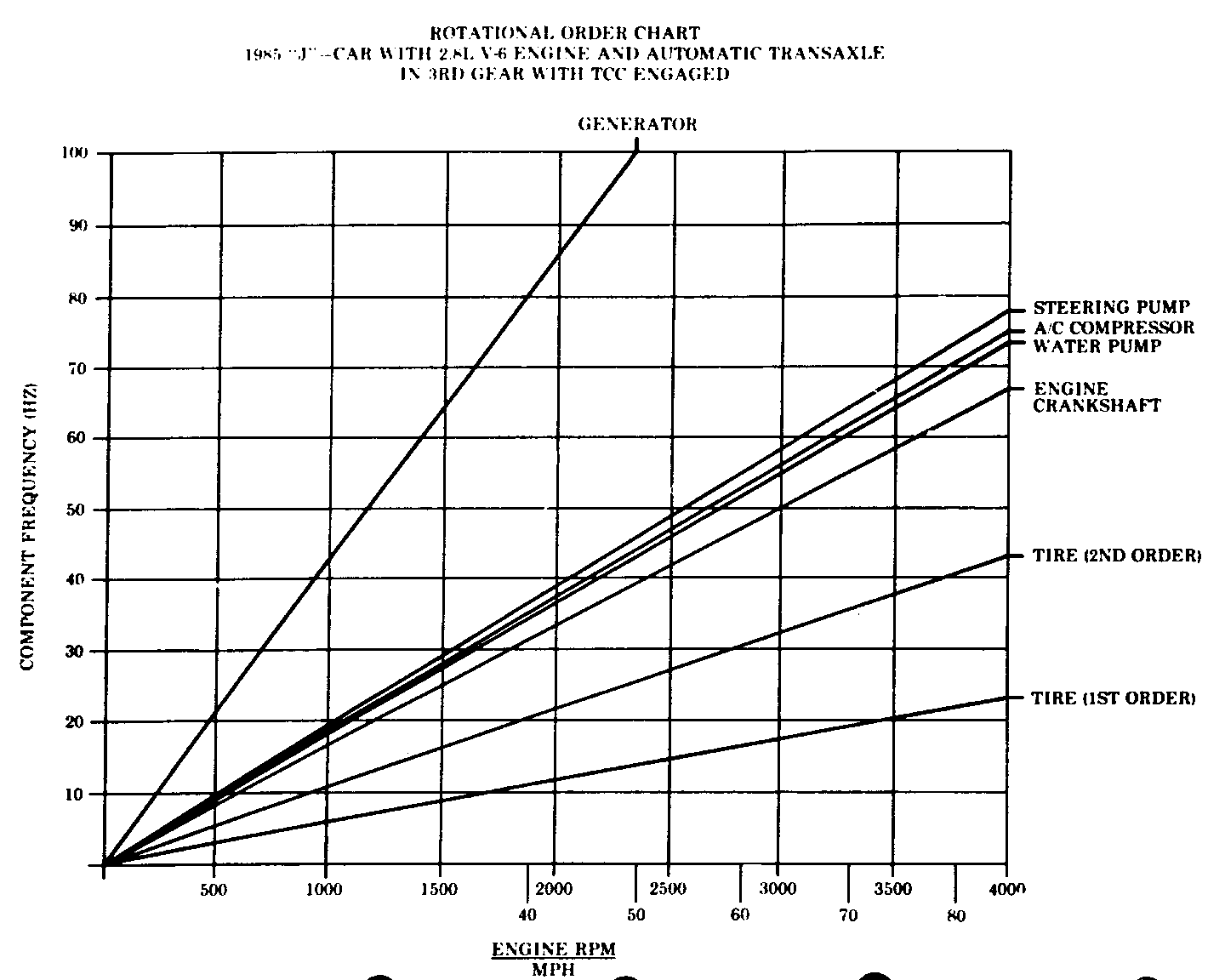
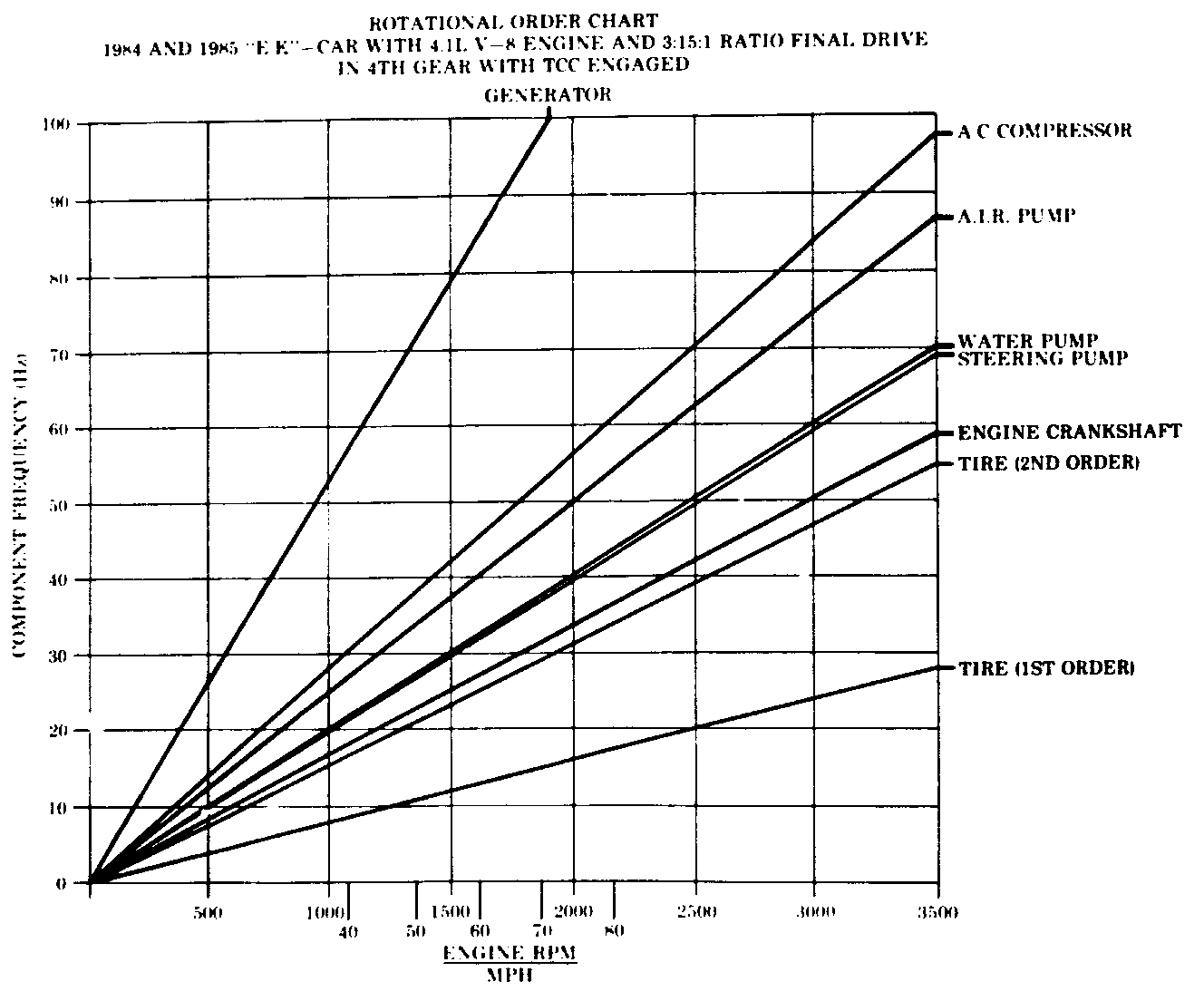
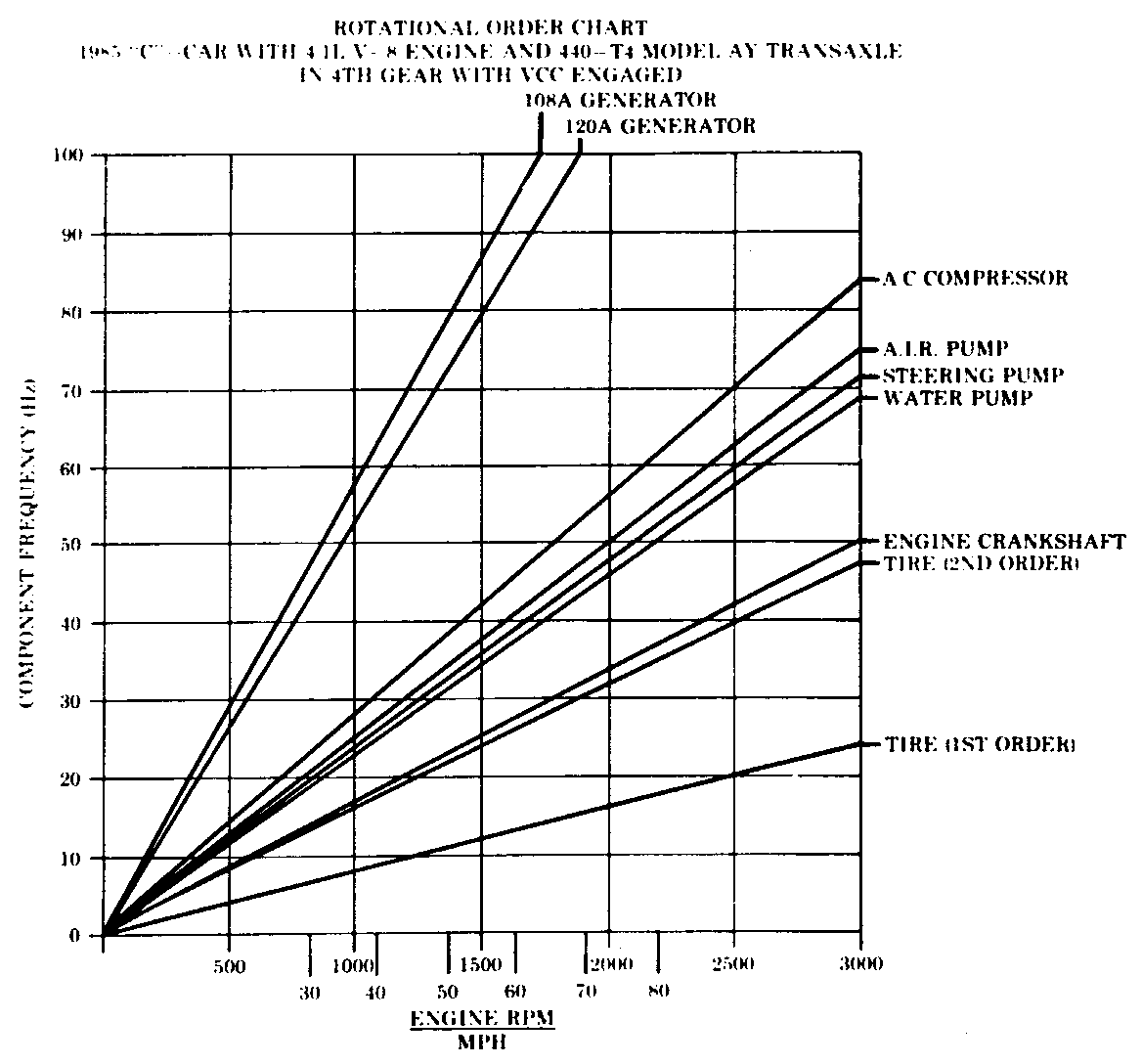
General Motors bulletins are intended for use by professional technicians, not a "do-it-yourselfer". They are written to inform those technicians of conditions that may occur on some vehicles, or to provide information that could assist in the proper service of a vehicle. Properly trained technicians have the equipment, tools, safety instructions and know-how to do a job properly and safely. If a condition is described, do not assume that the bulletin applies to your vehicle, or that your vehicle will have that condition. See a General Motors dealer servicing your brand of General Motors vehicle for information on whether your vehicle may benefit from the information.
